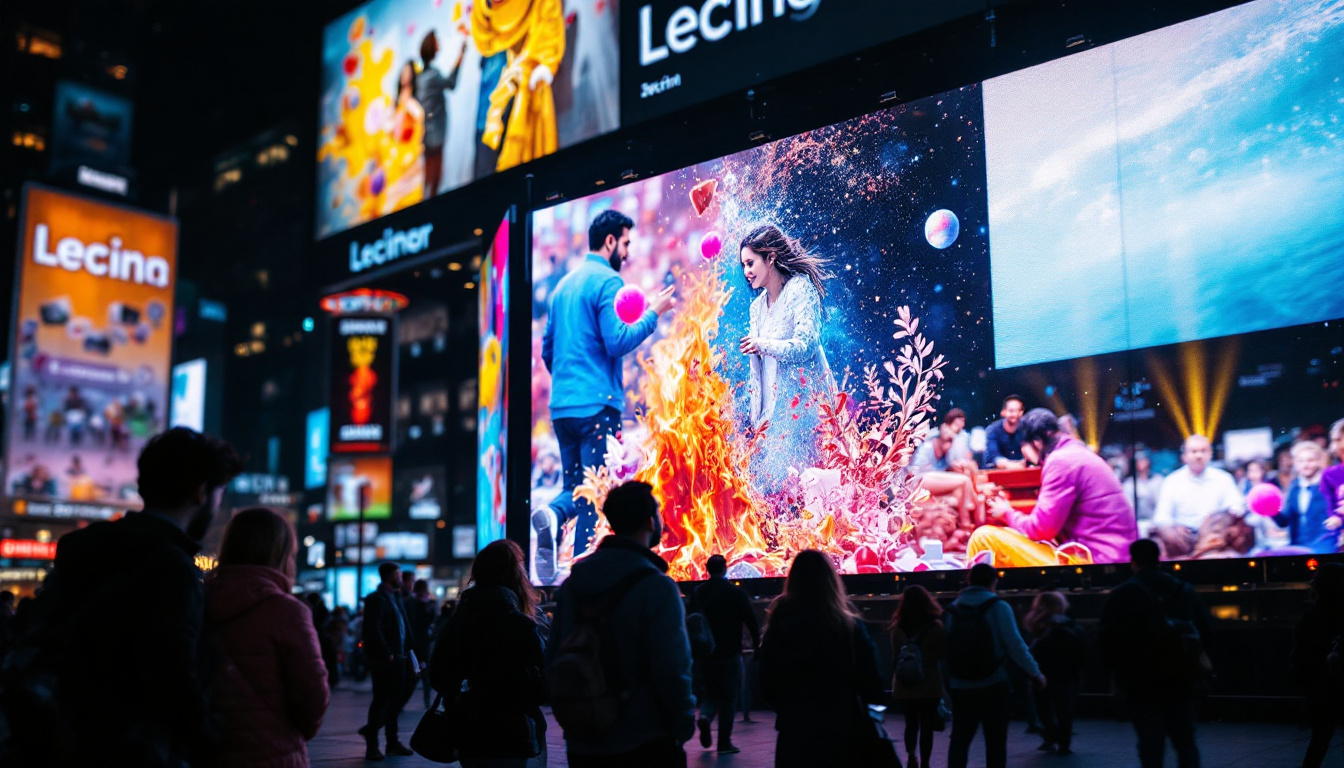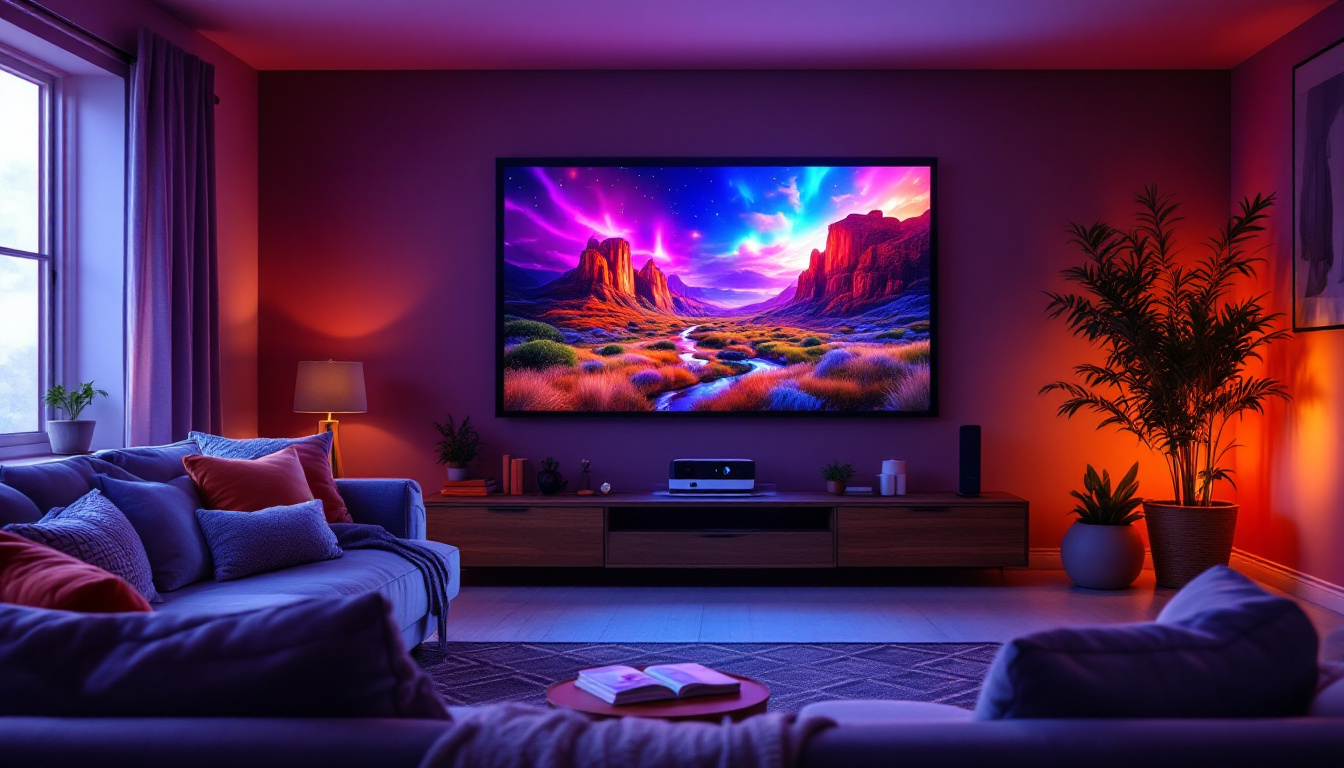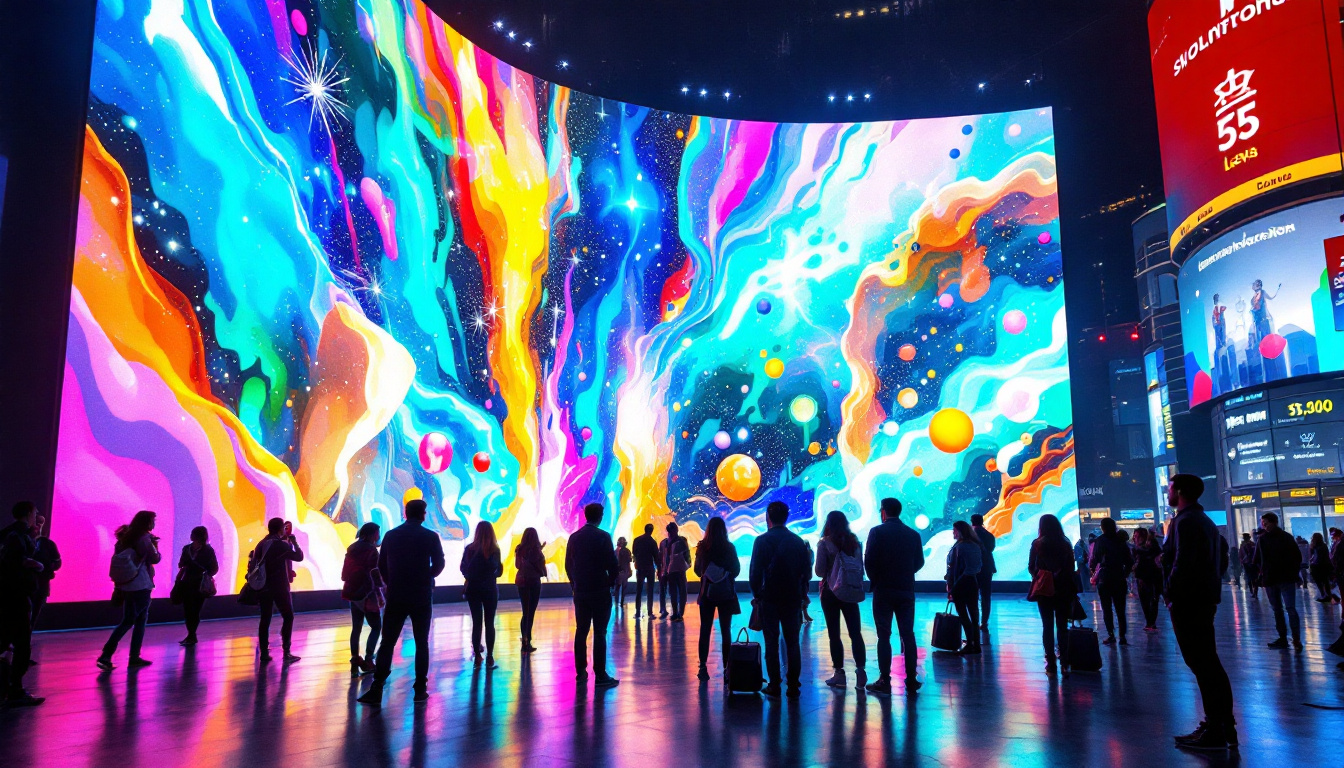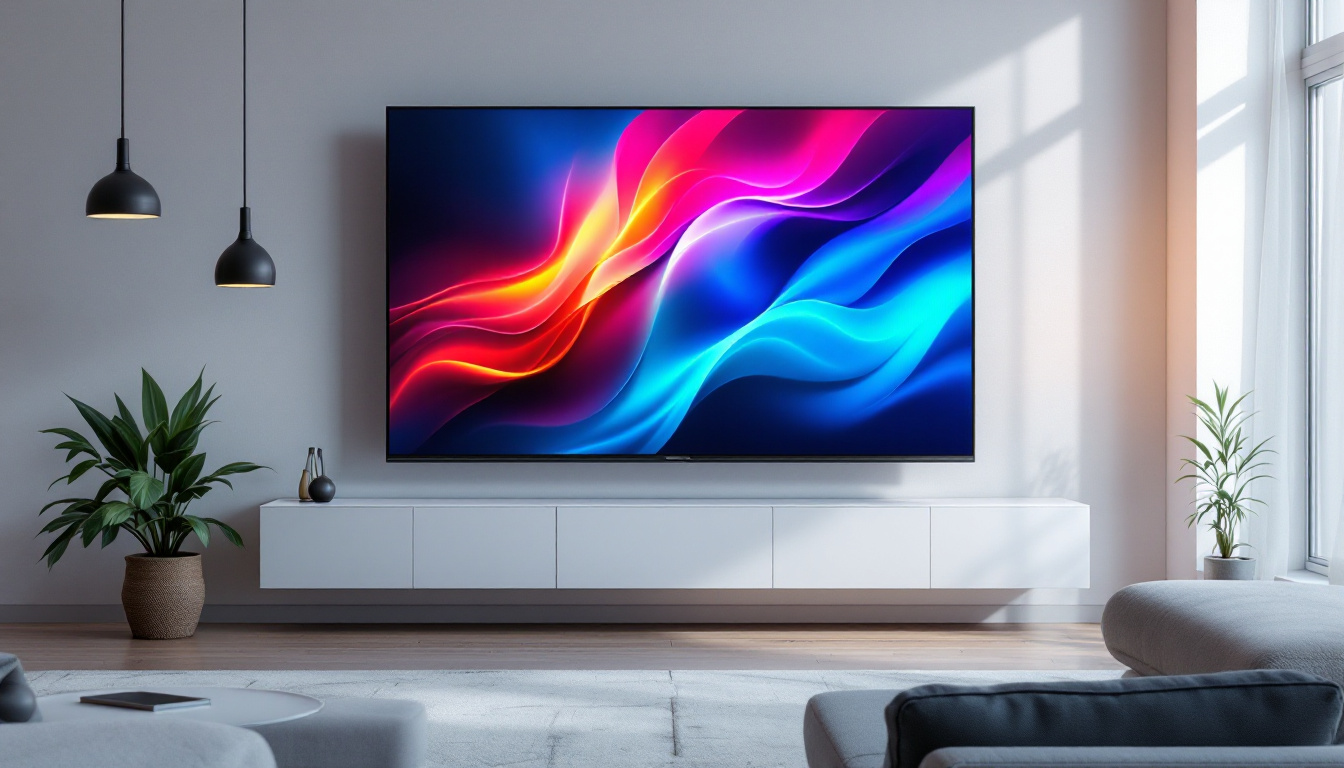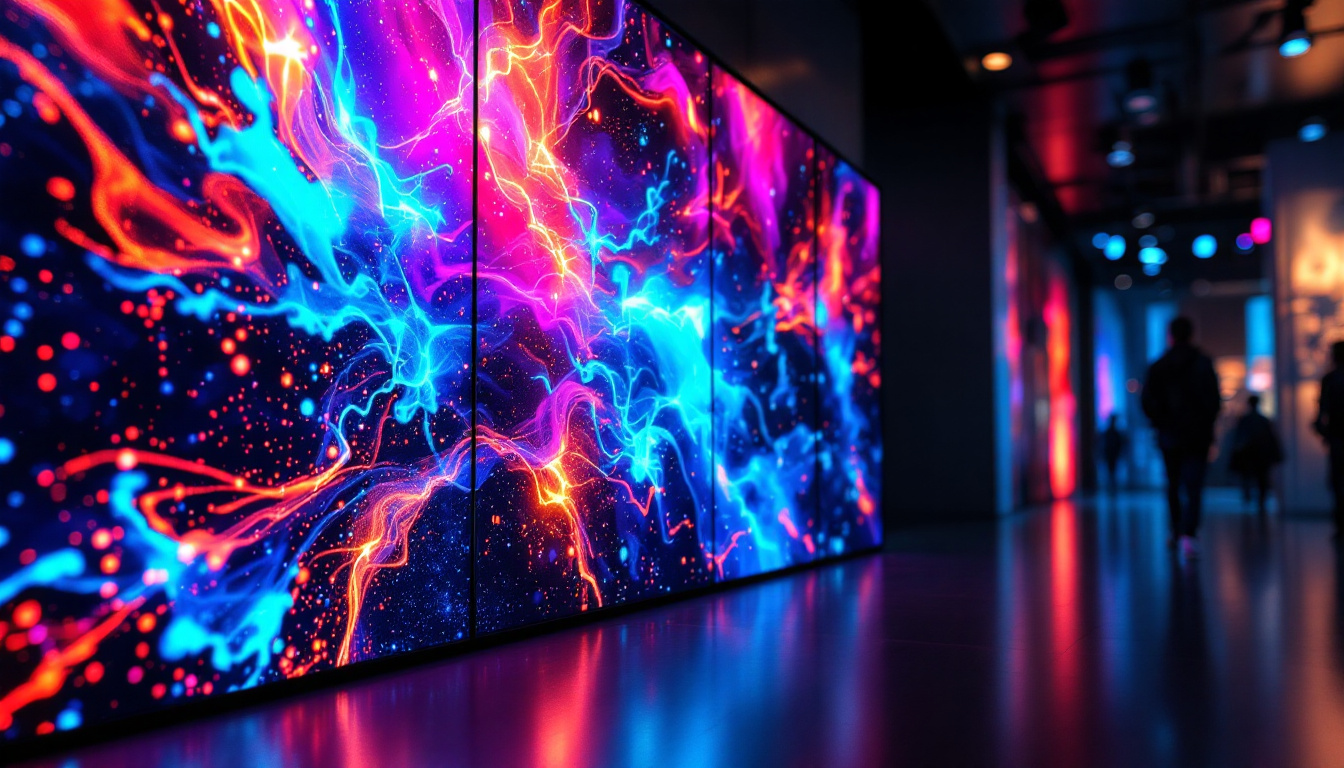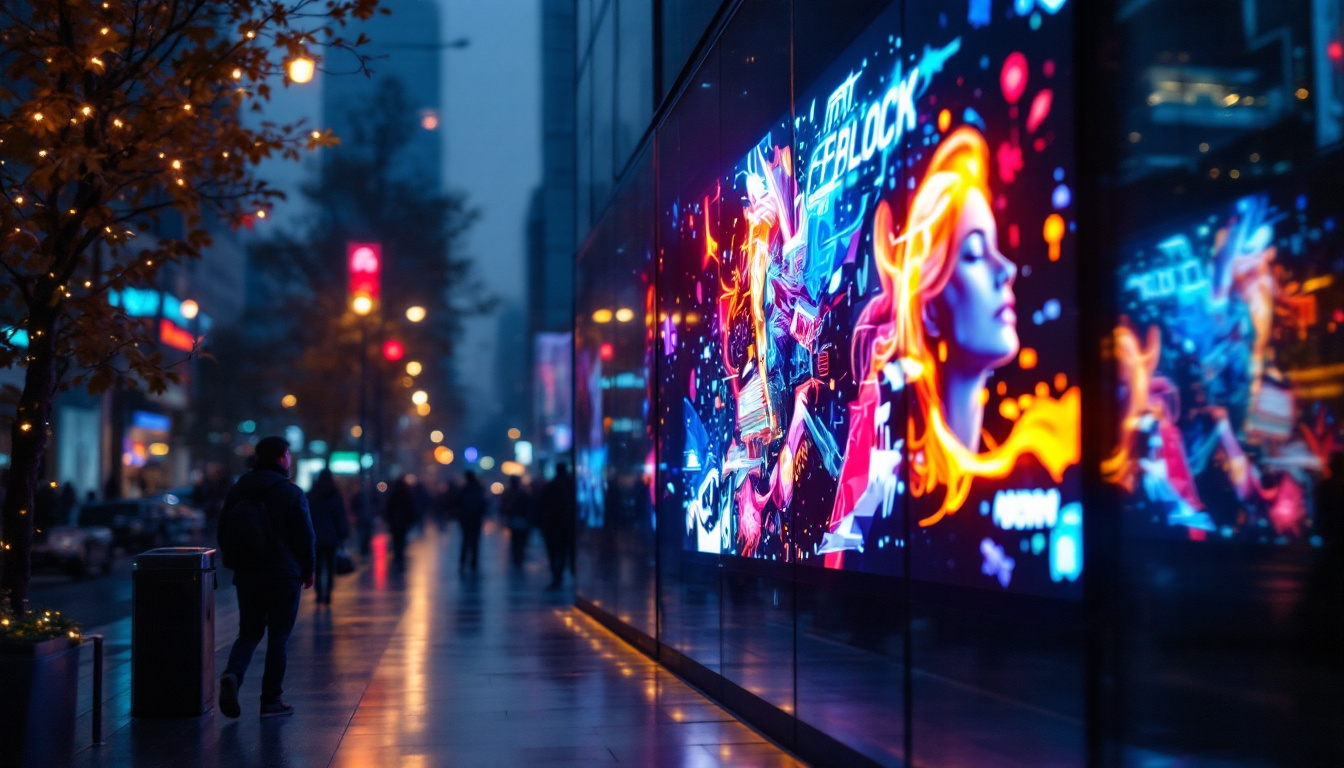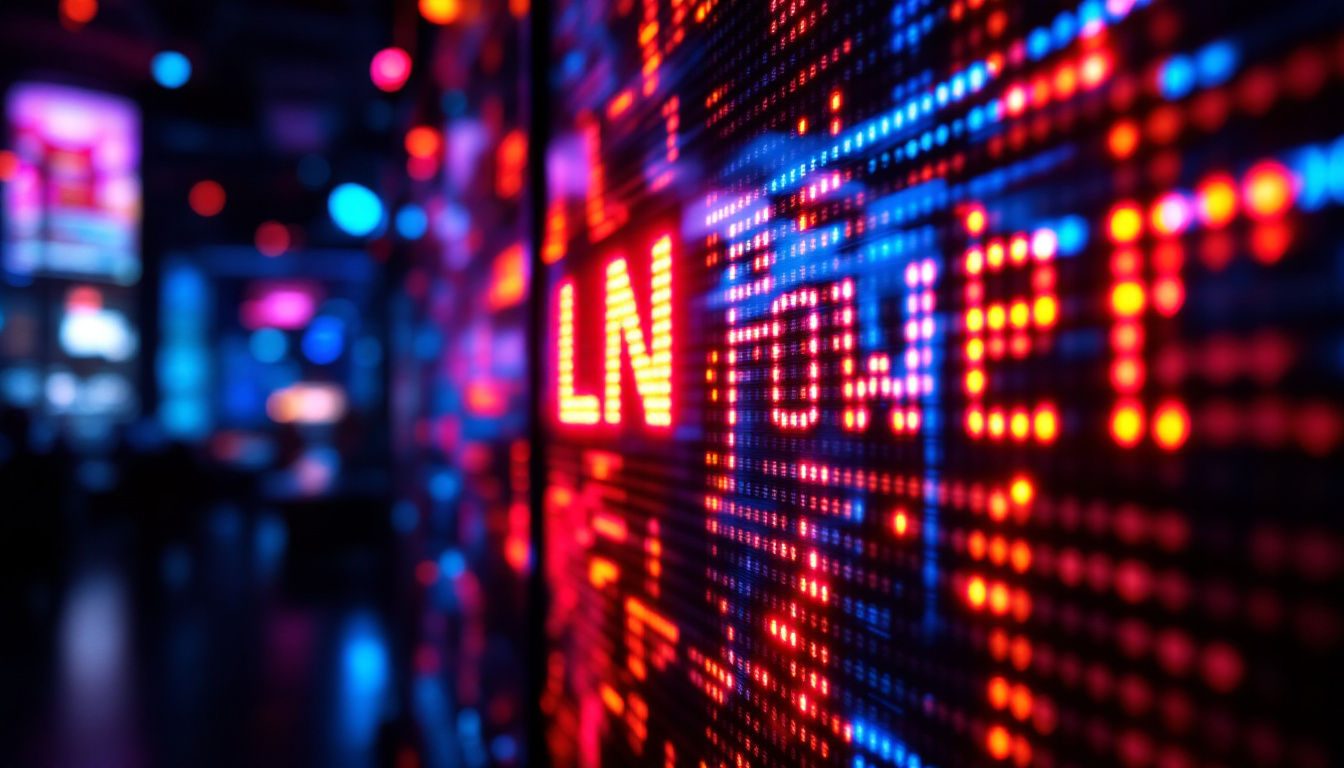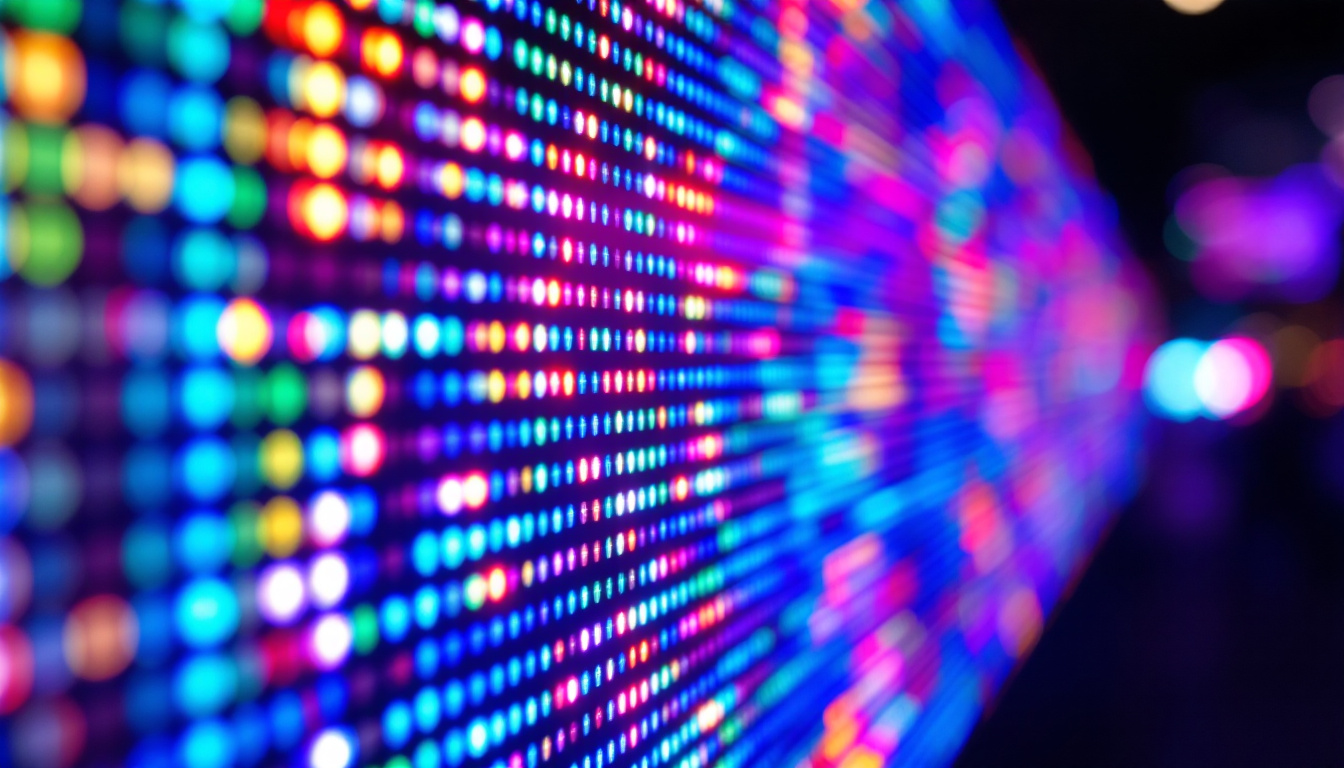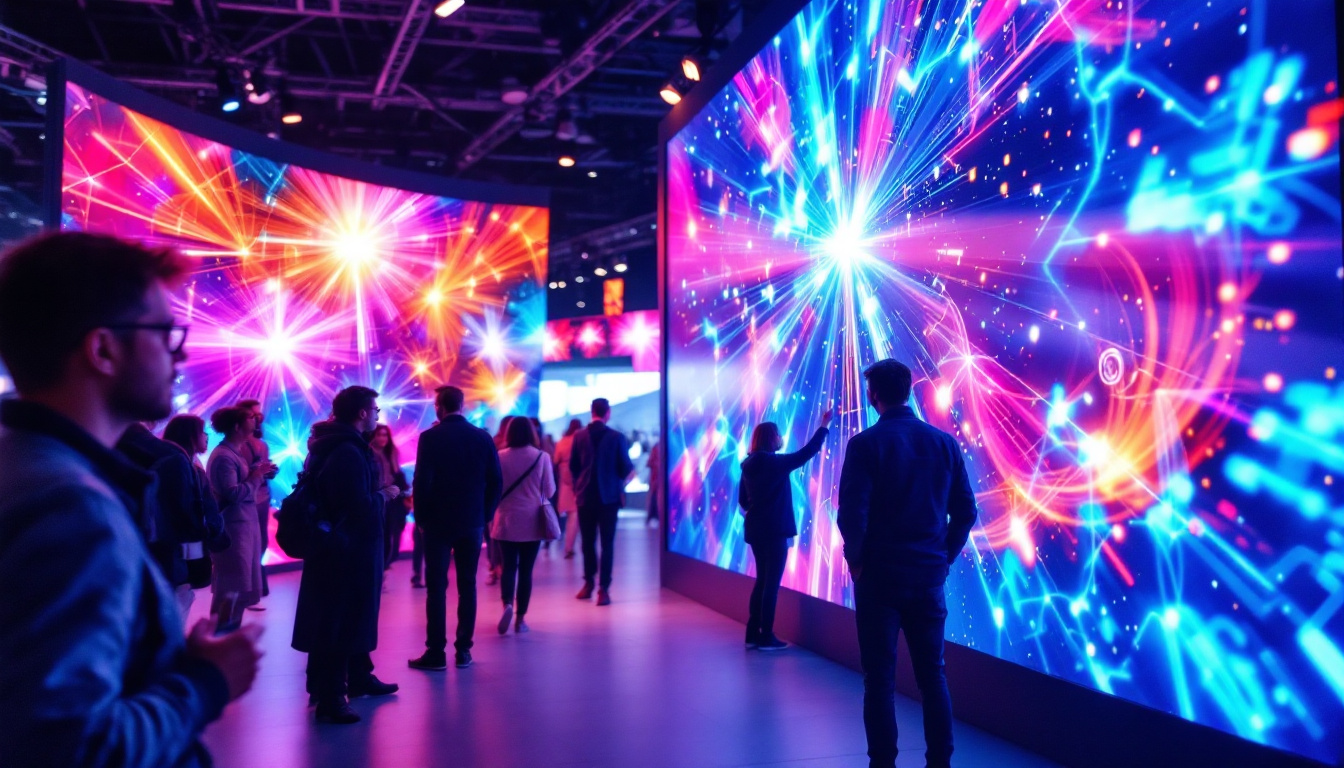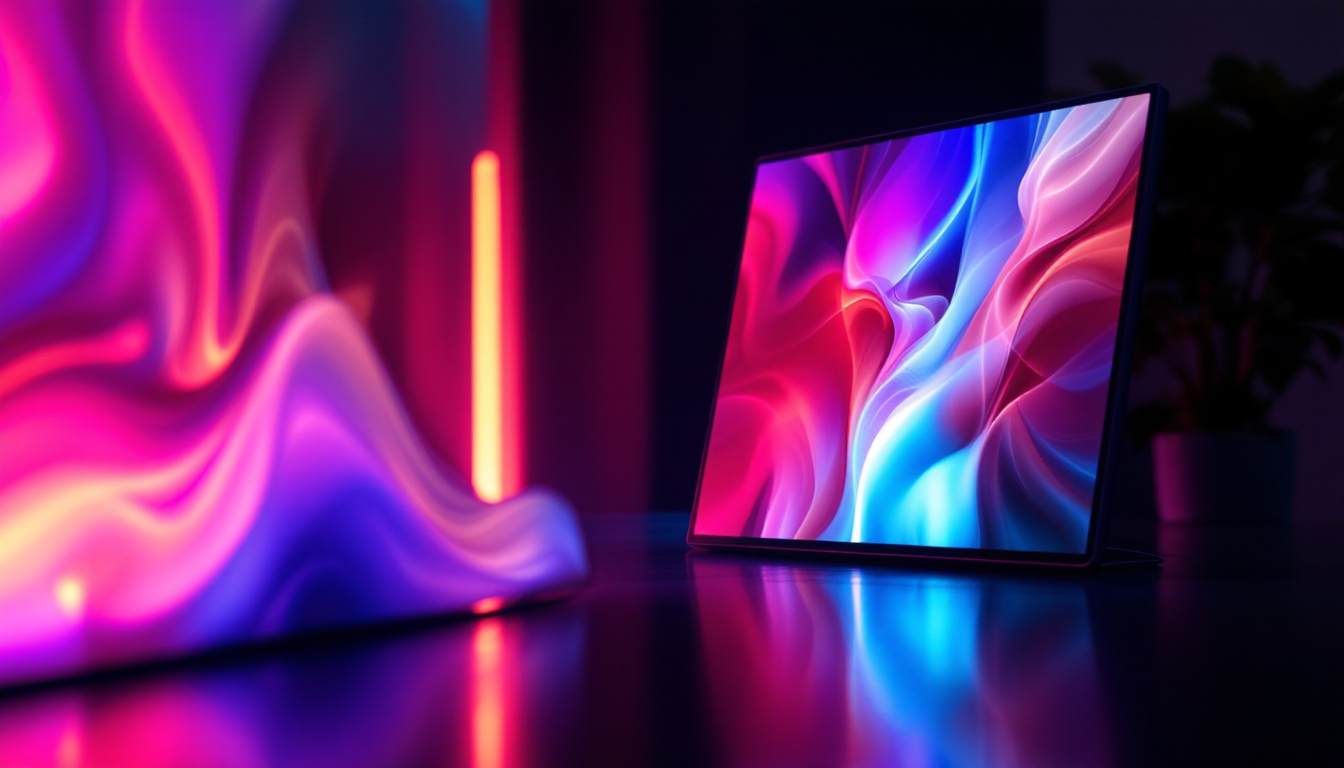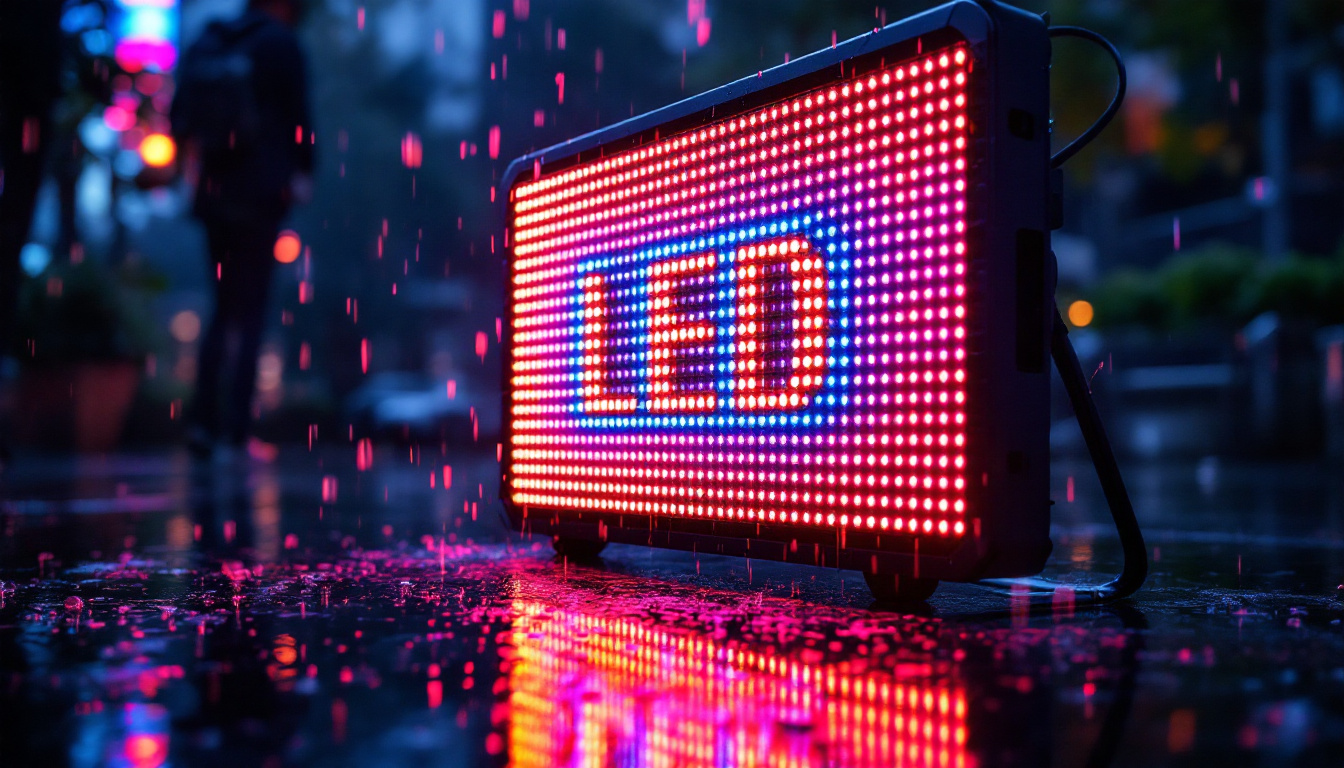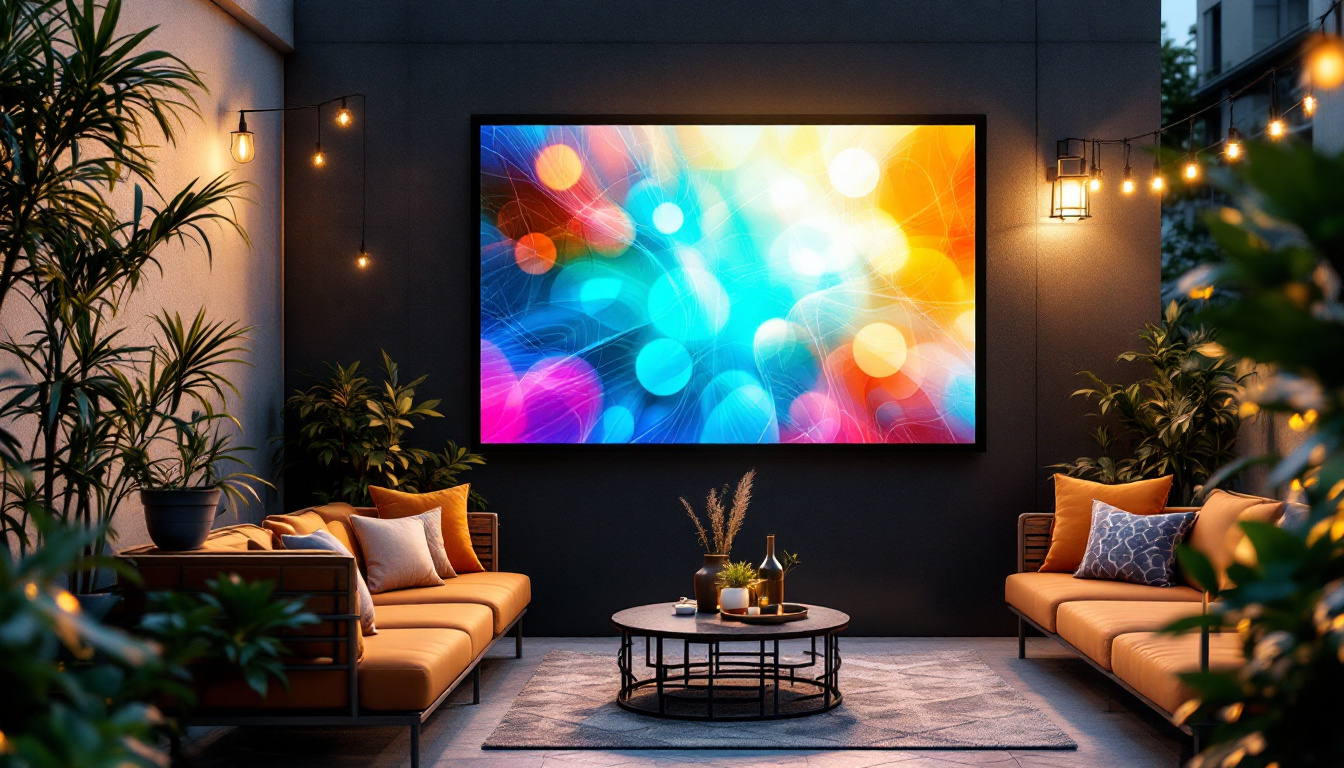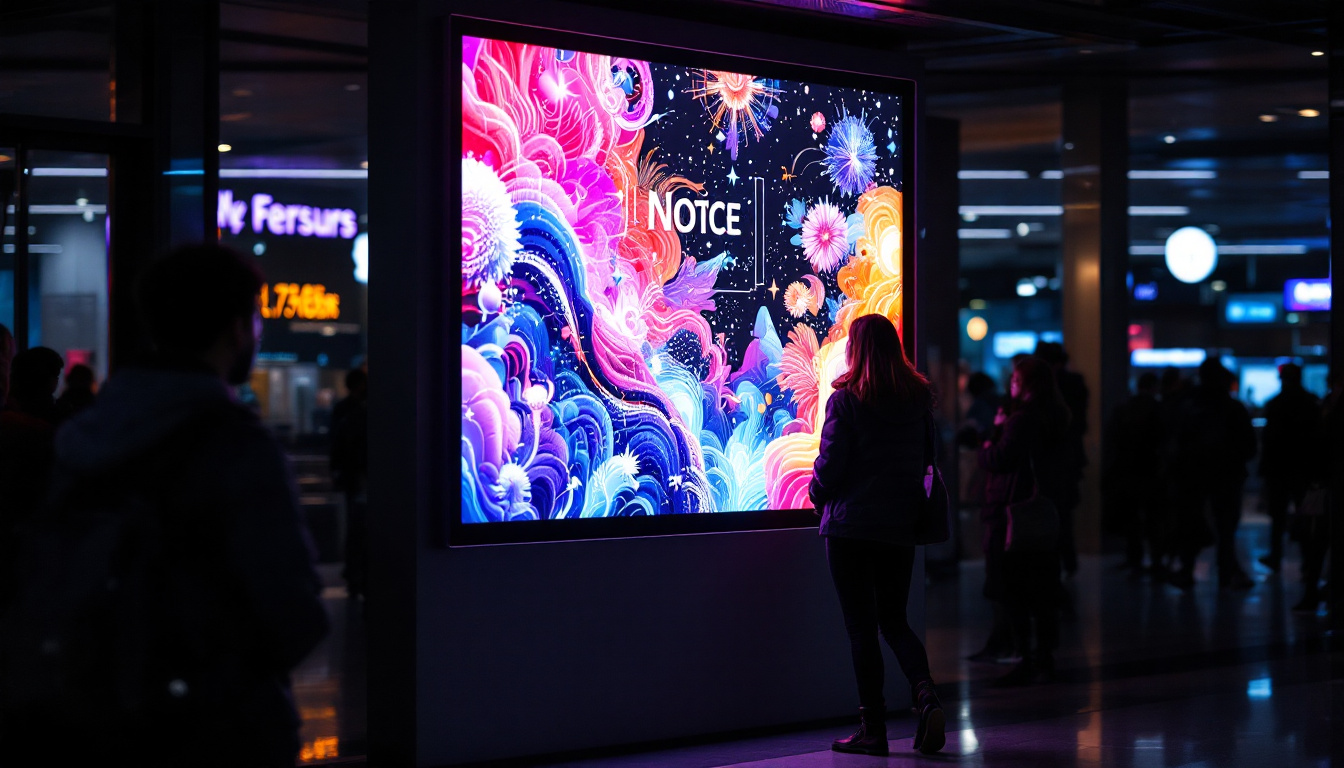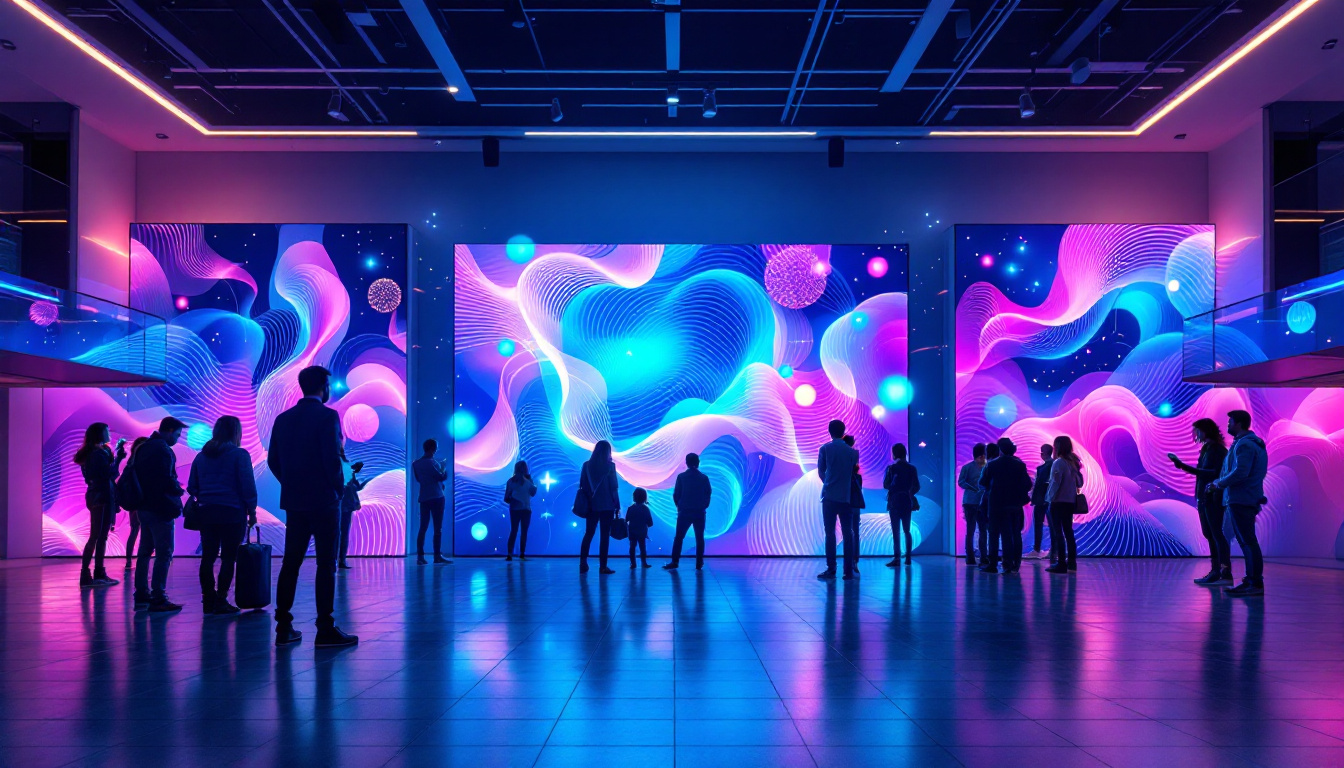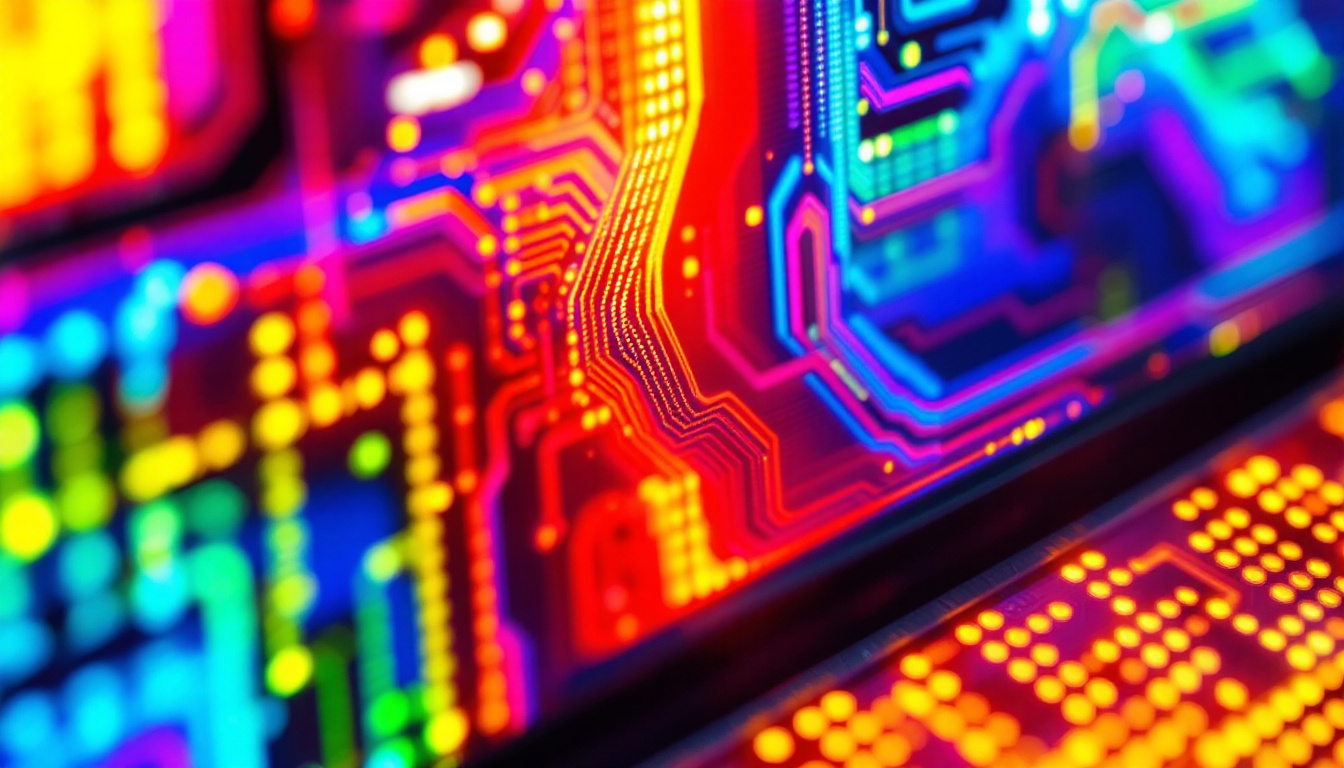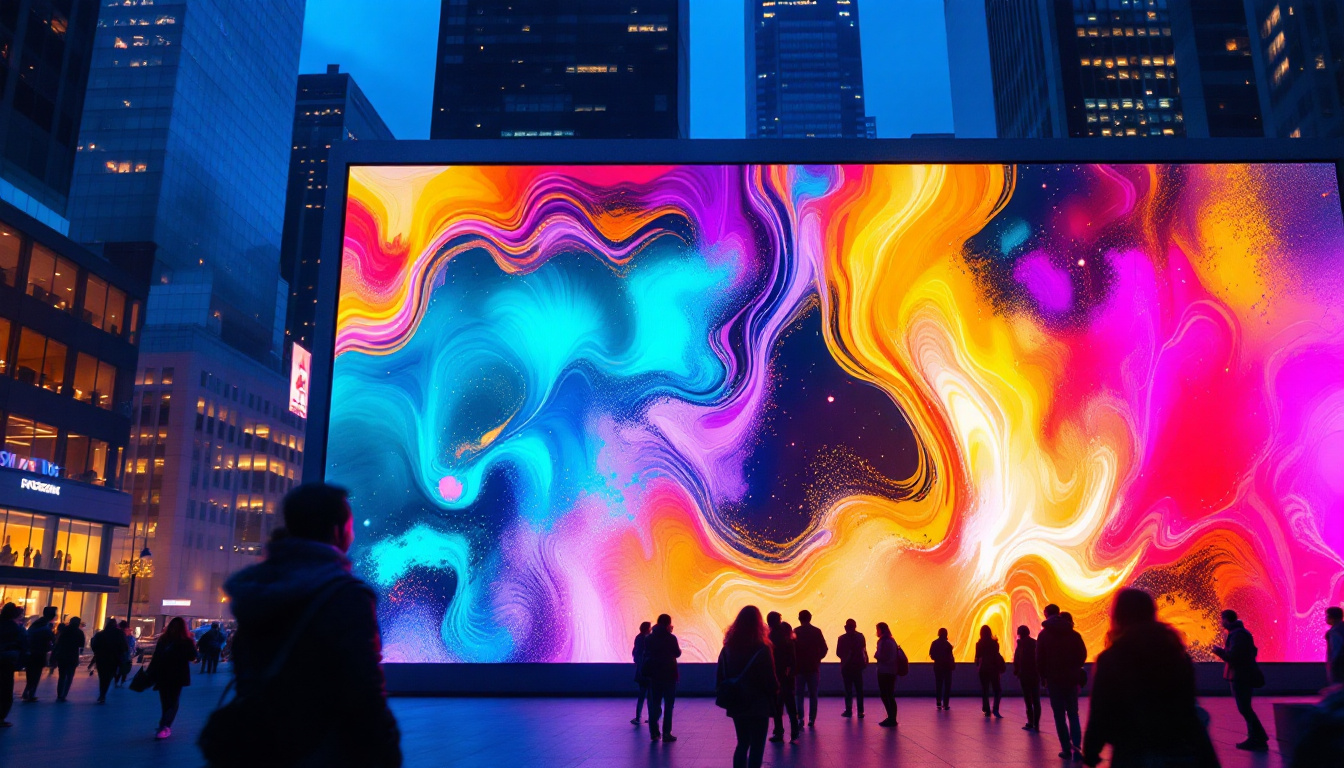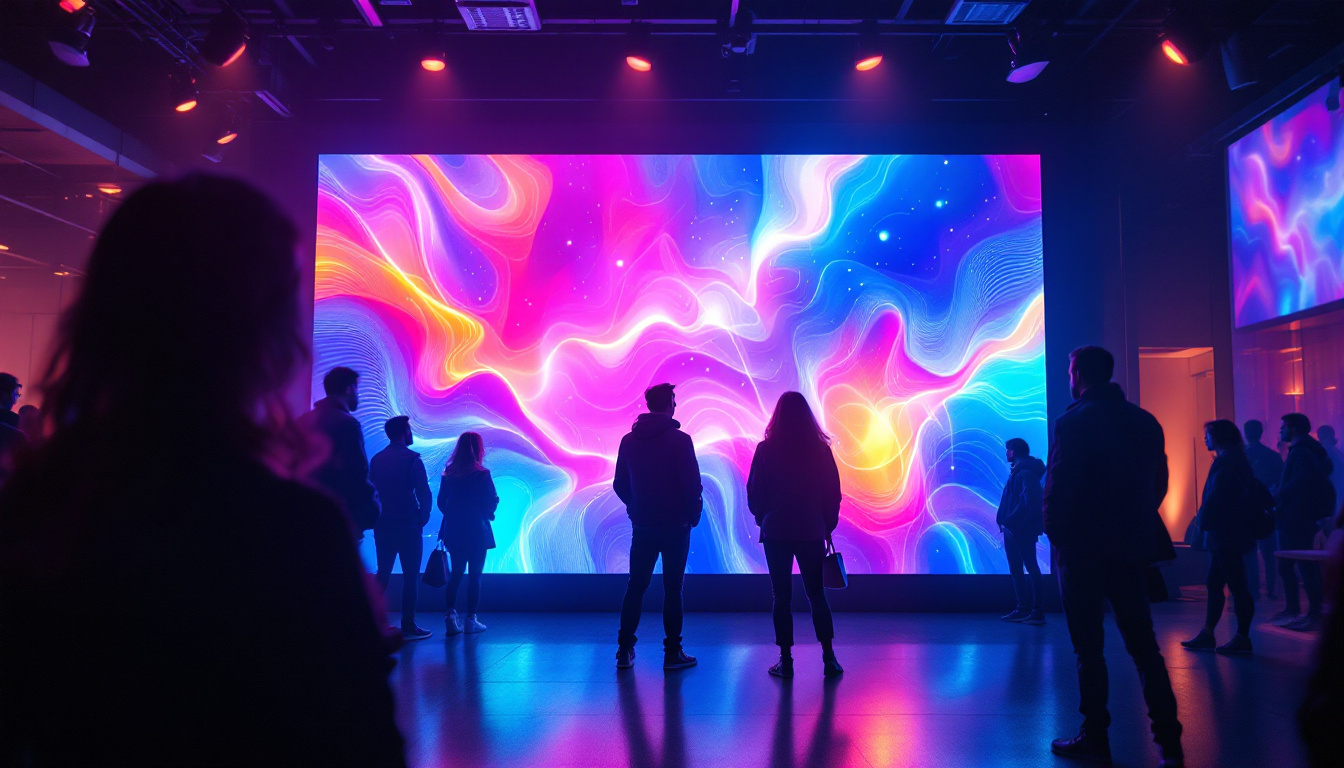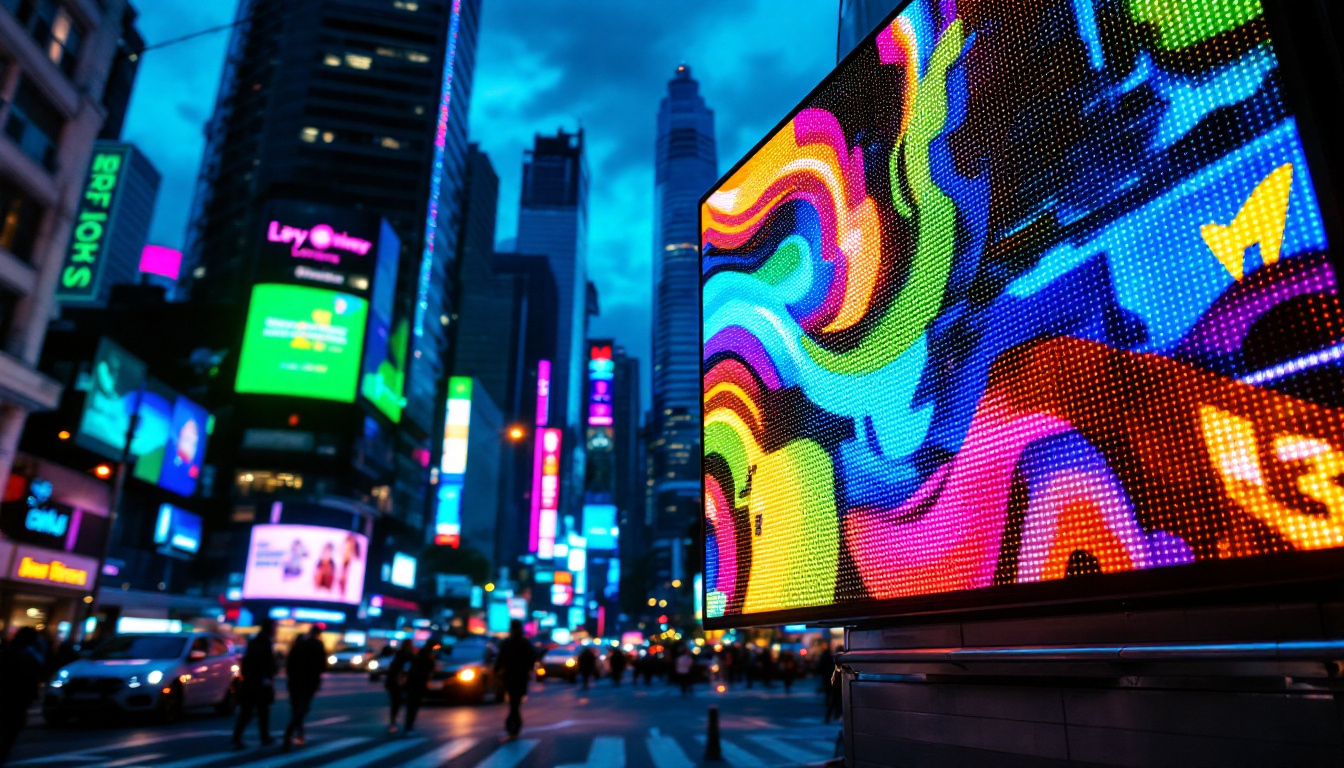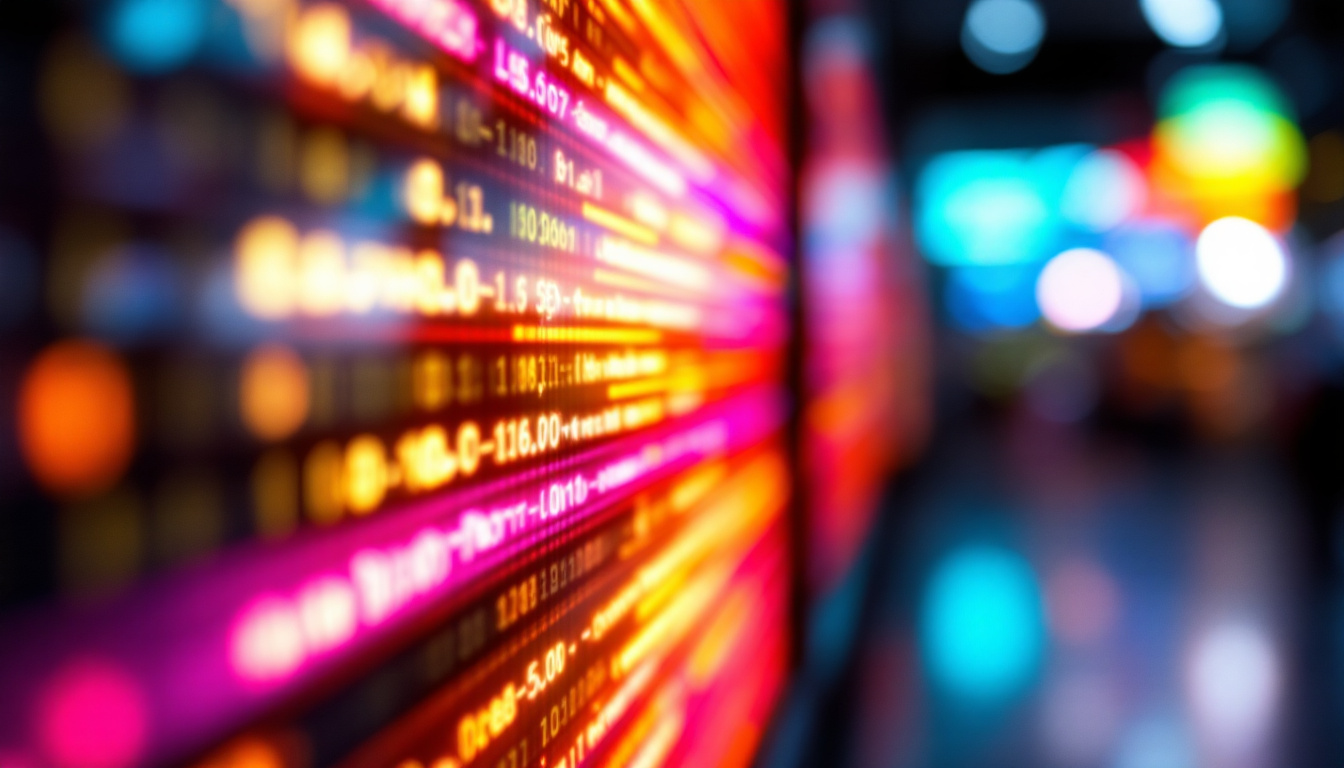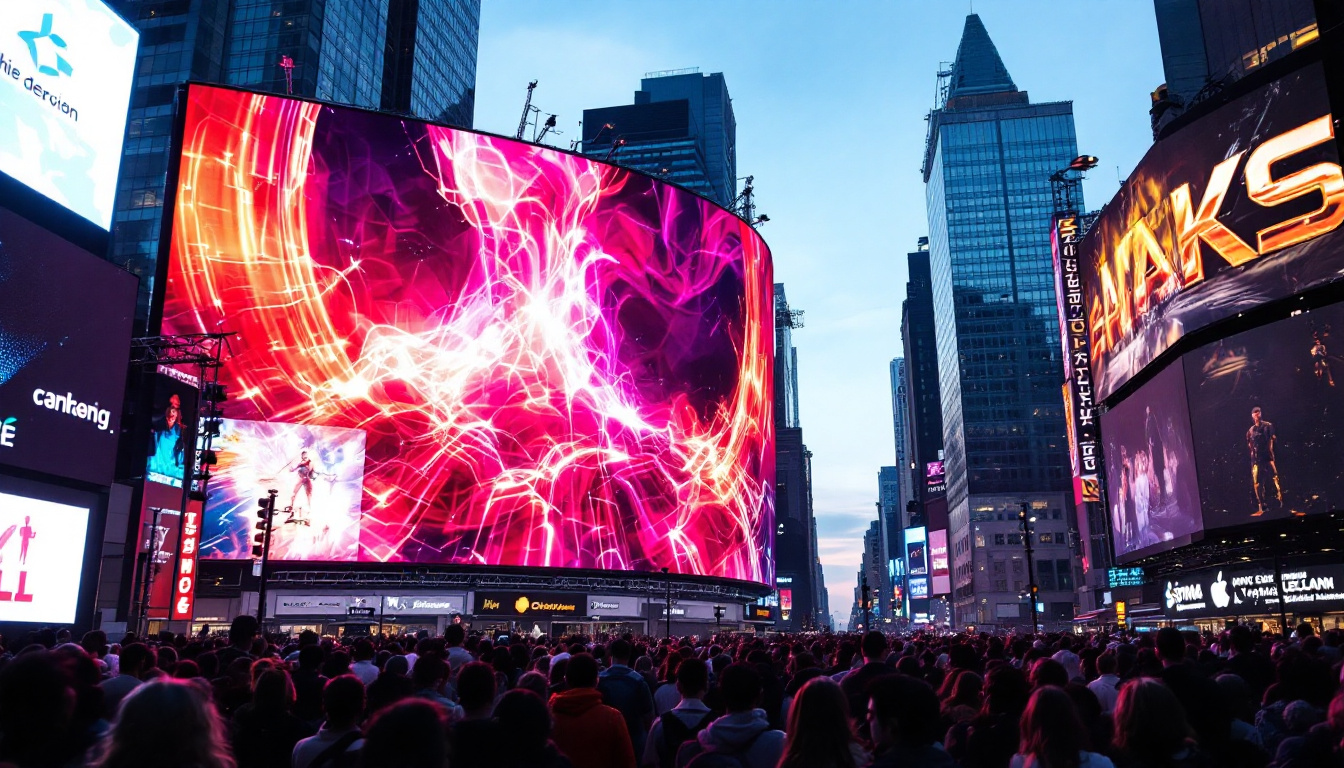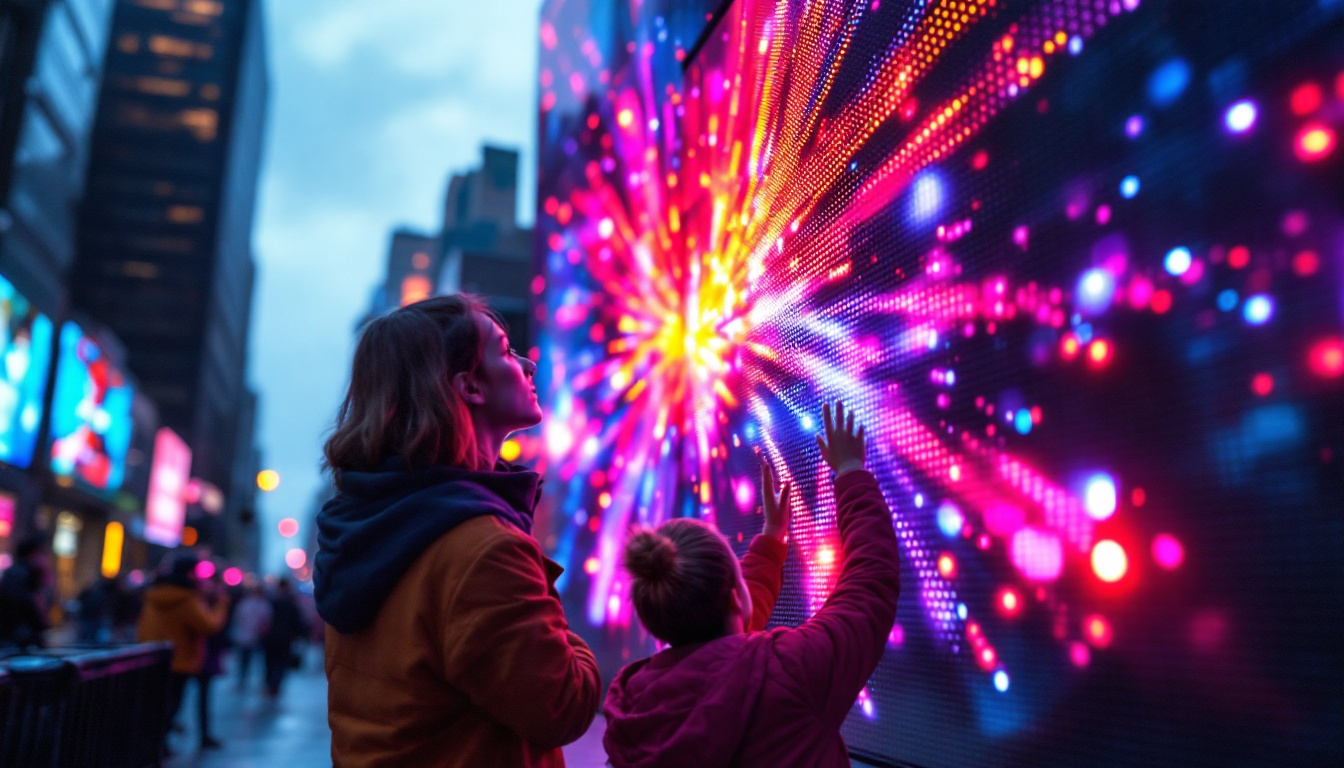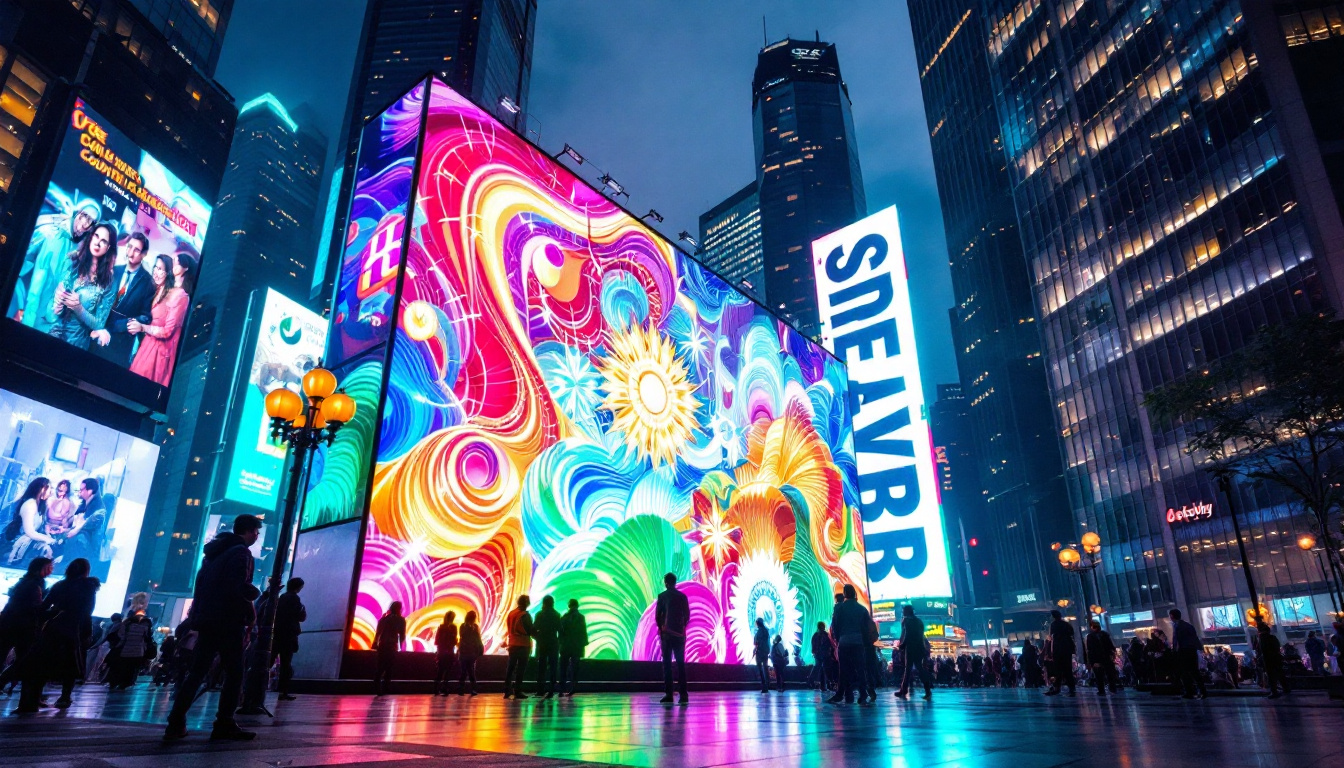In the fast-paced world of advertising, capturing the attention of potential customers is paramount. One of the most effective ways to do this is through the use of LED displays. These vibrant screens have transformed the landscape of advertising, offering dynamic and eye-catching visuals that can engage audiences in ways traditional media cannot. This article explores the ins and outs of advertising on LED screens, providing insights into their functionality, benefits, and best practices.
Understanding LED Displays
LED, or Light Emitting Diode, displays are a type of flat panel display technology that utilizes LEDs to produce images and videos. They are known for their brightness, energy efficiency, and versatility. Unlike traditional LCD screens, LED displays can be used in a variety of settings, from outdoor billboards to indoor advertising screens in shopping malls.
How LED Displays Work
At the core of an LED display is a matrix of individual LED lights. These lights can emit different colors when powered, allowing for the creation of full-color images and videos. The arrangement of these LEDs determines the resolution of the display, with higher resolutions providing sharper images. The technology behind LED displays has evolved significantly, leading to improvements in color accuracy, brightness, and durability.
LED displays can be categorized into two main types: direct view and backlit. Direct view LED displays consist of individual LEDs that form the entire image, while backlit displays use LEDs to illuminate an LCD panel from behind. Each type has its advantages and is suited for different applications, depending on the desired visual impact and environment.
Types of LED Displays
There are several types of LED displays, each designed for specific advertising needs. Outdoor LED displays are built to withstand the elements, featuring weatherproof casings and high brightness levels to ensure visibility in direct sunlight. Indoor LED displays, on the other hand, are typically used in shopping centers, airports, and other venues where close viewing is common.
Another classification is based on pixel pitch, which refers to the distance between the centers of two adjacent pixels. A smaller pixel pitch results in a higher resolution display, making it ideal for applications where viewers are close to the screen. Conversely, larger pixel pitches are suitable for outdoor displays where viewers are typically farther away.
The Advantages of LED Advertising
Advertising on LED screens offers numerous advantages over traditional advertising methods. These benefits make LED displays an increasingly popular choice for businesses looking to enhance their marketing strategies.
High Visibility and Impact
One of the most significant advantages of LED advertising is its visibility. The bright, vivid colors produced by LED displays can attract attention even in well-lit environments. This high visibility ensures that advertisements are seen by a larger audience, increasing the likelihood of engagement.
Moreover, the dynamic nature of LED displays allows for the presentation of moving images and videos, which can create a more engaging experience for viewers. This capability can be particularly effective in conveying complex messages or showcasing products in action, making advertisements more memorable.
Cost-Effectiveness
While the initial investment in LED technology may be higher than traditional advertising methods, the long-term cost savings can be substantial. LED displays are energy-efficient, consuming significantly less power than traditional lighting systems. This efficiency translates to lower electricity bills, making them a more sustainable option for businesses.
Additionally, LED displays allow for easy content updates, eliminating the need for physical materials like posters or banners. This flexibility means businesses can quickly adapt their advertising campaigns to reflect current promotions or events without incurring additional printing costs.
Targeted Advertising
LED displays can be strategically placed in high-traffic areas, allowing businesses to target specific audiences effectively. By analyzing foot traffic data, advertisers can select optimal locations for their displays, ensuring their messages reach the right people at the right time.
Furthermore, many modern LED displays are equipped with advanced technology that enables real-time content changes based on audience demographics. For example, a display can show different advertisements depending on the time of day or the audience’s age group, maximizing the relevance of the content presented.
Best Practices for LED Advertising
To maximize the effectiveness of advertising on LED screens, businesses should adhere to certain best practices. These practices ensure that advertisements are not only visually appealing but also deliver the intended message effectively.
Keep It Simple
When designing advertisements for LED displays, simplicity is key. Viewers typically have only a few seconds to absorb the information presented, so it is essential to convey messages quickly and clearly. Using bold visuals and concise text can help ensure that the message is understood at a glance.
Additionally, incorporating a strong call to action can encourage viewers to take the next step, whether that be visiting a website, making a purchase, or engaging with the brand on social media. The call to action should be prominent and easy to understand, guiding viewers toward the desired outcome.
Utilize High-Quality Content
High-quality visuals are crucial for capturing attention and making a lasting impression. Advertisers should invest in professional graphics and videos that reflect their brand’s identity and values. Poor-quality content can detract from the message and diminish the perceived value of the brand.
Moreover, using animations and transitions can enhance the viewing experience, making advertisements more dynamic and engaging. However, it is essential to strike a balance; overly complex animations may distract from the core message, so clarity should always be prioritized.
Monitor and Analyze Performance
To gauge the effectiveness of LED advertising campaigns, businesses should implement monitoring and analysis strategies. By tracking metrics such as viewer engagement, foot traffic, and sales conversions, advertisers can assess the impact of their campaigns and make informed decisions for future initiatives.
Utilizing software tools that provide real-time data can help advertisers adjust their content and strategies based on performance. This adaptability allows businesses to optimize their advertising efforts continuously, ensuring they achieve the best possible return on investment.
Challenges of LED Advertising
While LED advertising presents numerous advantages, it is not without its challenges. Understanding these challenges can help businesses navigate potential pitfalls and maximize the effectiveness of their campaigns.
Initial Investment Costs
The upfront costs associated with purchasing and installing LED displays can be a significant barrier for some businesses. While the long-term savings are substantial, the initial investment can be daunting, especially for small businesses or startups.
However, many companies offer leasing options or financing plans that can make LED advertising more accessible. Exploring these alternatives can help businesses take advantage of the benefits of LED displays without straining their budgets.
Maintenance and Technical Issues
Like any technology, LED displays require regular maintenance to ensure optimal performance. This maintenance can include cleaning, software updates, and addressing any technical issues that may arise. Neglecting maintenance can lead to diminished display quality and reduced effectiveness of advertising efforts.
Businesses should factor in these ongoing maintenance costs when considering LED advertising. Partnering with a reliable service provider can help mitigate these challenges, ensuring that displays remain in top condition and continue to deliver impactful advertising.
Content Management
Managing content for LED displays can be complex, especially for businesses with multiple locations or campaigns. Keeping content fresh and relevant is essential for maintaining viewer engagement, but this requires a dedicated effort and resources.
Implementing a content management system can streamline this process, allowing businesses to schedule and update content efficiently. This system can help ensure that advertisements remain timely and aligned with current marketing strategies, enhancing overall effectiveness.
The Future of LED Advertising
The landscape of advertising is continually evolving, and LED displays are at the forefront of this transformation. As technology advances, the capabilities of LED displays are expected to expand, opening new avenues for creative advertising.
Integration with Digital Technology
As digital technology continues to advance, the integration of LED displays with other digital platforms is becoming increasingly common. This integration allows for more interactive and engaging advertising experiences, such as augmented reality and interactive content.
For example, advertisers can create campaigns that encourage viewer interaction, such as participating in social media challenges or scanning QR codes for exclusive offers. These interactive elements can significantly enhance viewer engagement and create a more immersive advertising experience.
Sustainability and Eco-Friendly Practices
As environmental concerns grow, businesses are increasingly prioritizing sustainability in their advertising practices. LED displays are inherently more energy-efficient than traditional advertising methods, but there is also a push for more eco-friendly materials and practices in the production and installation of these displays.
In the future, businesses may see a rise in the use of recyclable materials and sustainable manufacturing processes in LED advertising. This shift not only benefits the environment but can also enhance a brand’s reputation among eco-conscious consumers.
Personalization and Data-Driven Advertising
The future of LED advertising is likely to see a greater emphasis on personalization, driven by data analytics and audience insights. Advertisers can leverage data to tailor content to specific demographics, preferences, and behaviors, creating more relevant and impactful advertising experiences.
As technology continues to evolve, the ability to deliver personalized content in real-time will become increasingly sophisticated. This capability will allow businesses to connect with their audiences on a deeper level, fostering brand loyalty and driving conversions.
Conclusion
Advertising on LED screens offers a dynamic and effective way to engage audiences in today’s competitive market. With their high visibility, cost-effectiveness, and ability to deliver targeted messages, LED displays are an invaluable tool for businesses looking to enhance their advertising strategies.
By understanding the technology behind LED displays, adhering to best practices, and navigating potential challenges, businesses can leverage this powerful medium to create impactful advertising campaigns. As the future of LED advertising unfolds, embracing innovation and sustainability will be key to staying ahead in the ever-evolving landscape of marketing.
Discover LumenMatrix’s Innovative LED Solutions
Ready to elevate your advertising strategy with high-impact LED displays? Look no further than LumenMatrix, a pioneer in LED display technology. Our diverse range of products, from Indoor and Outdoor LED Wall Displays to specialized solutions like Vehicle LED Displays and LED Sports Displays, are designed to captivate your audience and amplify your message. Embrace the future of visual communication with LumenMatrix’s advanced digital signage and custom LED solutions. Check out LumenMatrix LED Display Solutions today and transform your brand’s visibility with unparalleled clarity and engagement.

